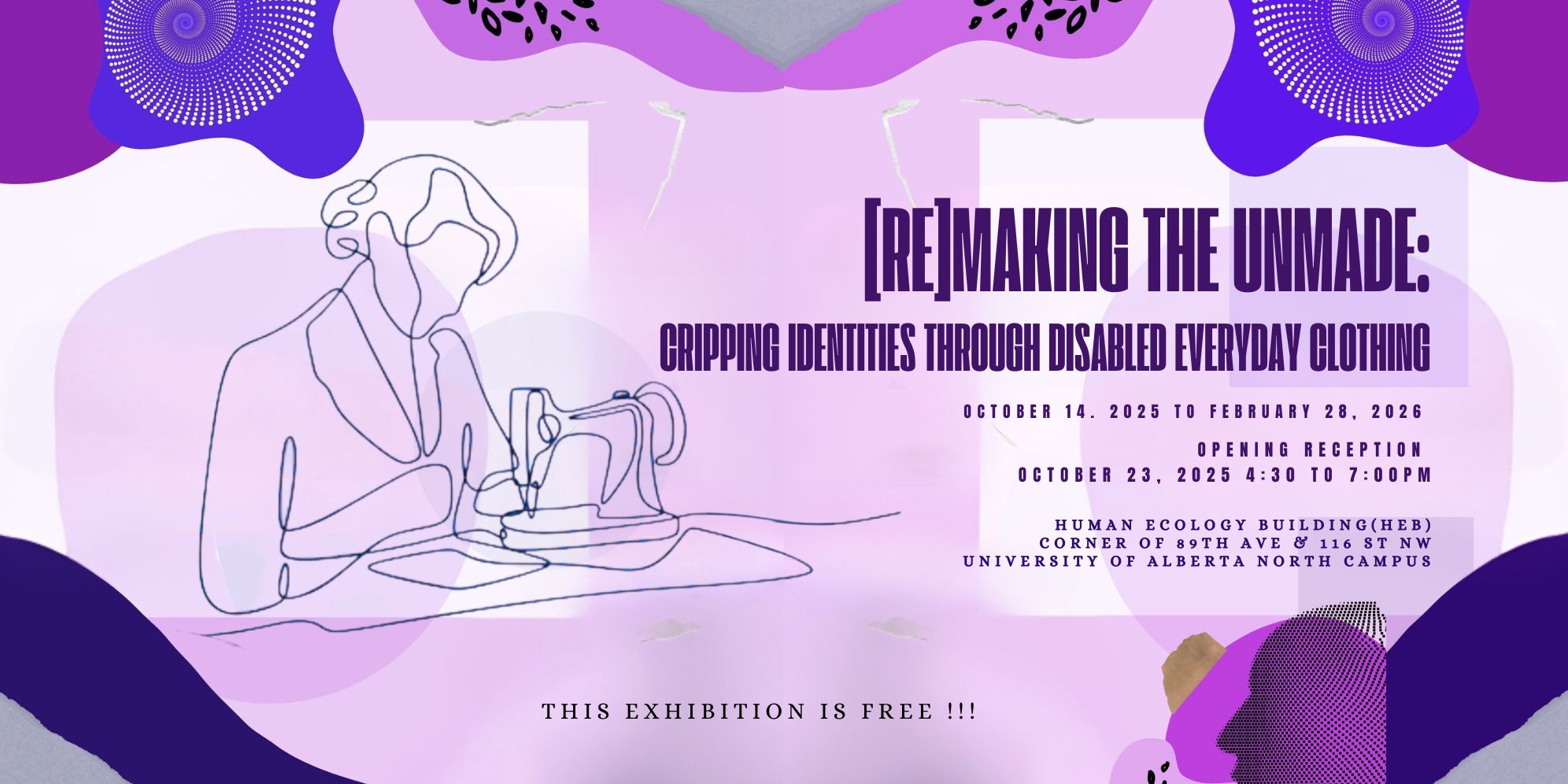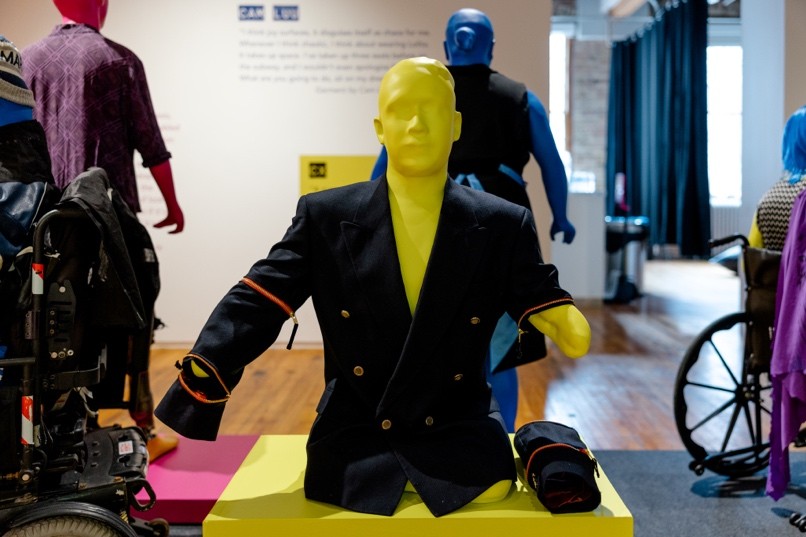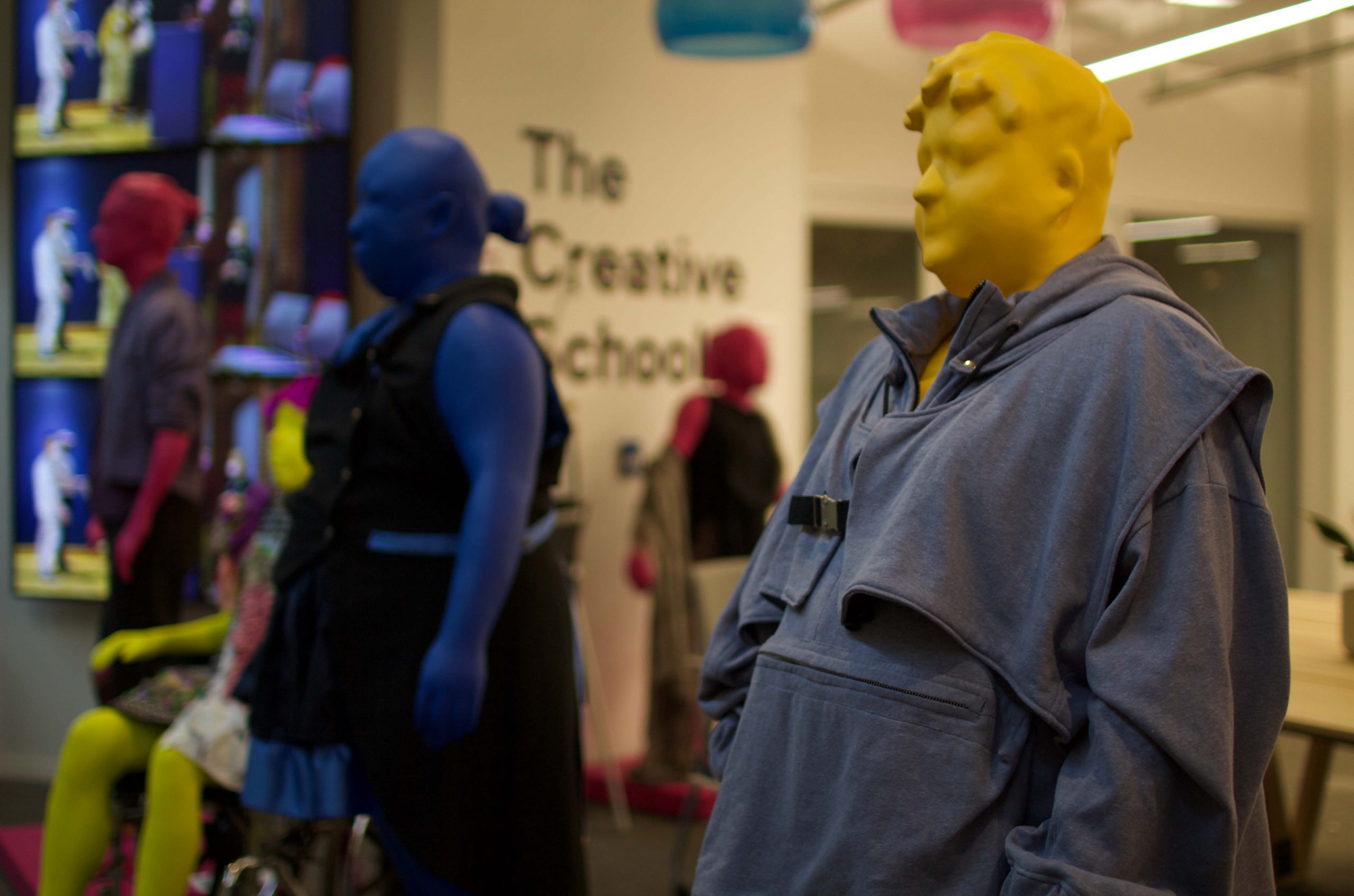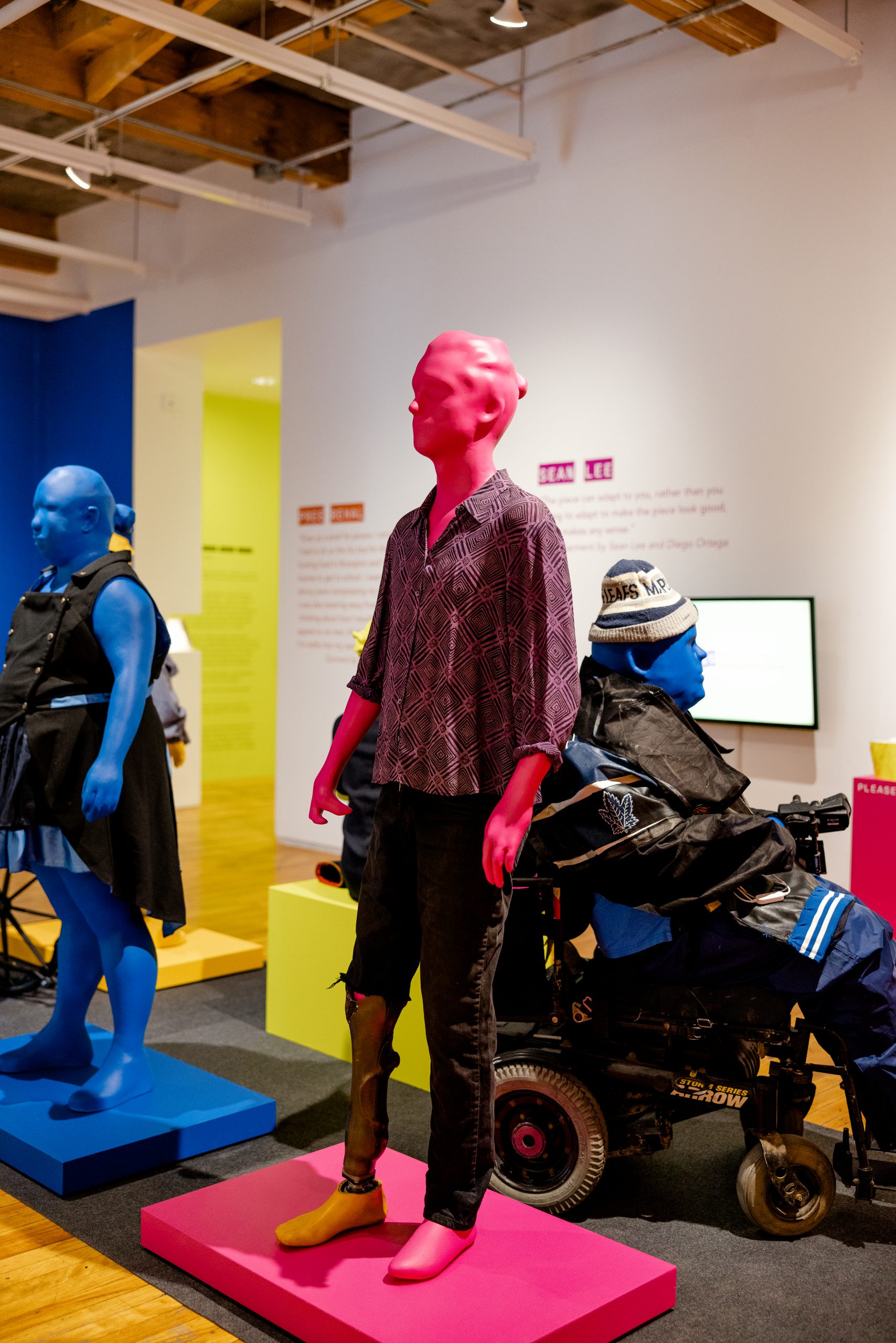
October 14, 2025 – February 28, 2026
Opening reception on October 23, 2025, from 4:30 to 7:00 pm
Human Ecology Building (HEB)
Corner of 89th Ave & 116 St NW
University of Alberta North Campus
*
Team Members
Megan Strickfaden || Elsie Osei || Emma Carr || Zoe Wagner || Chenshuo Li || Michael Antwi || Jackie Fisher || Elizabeth Lai || Thomas Lai || Alexis De Villa || Ben Barry || Philippa Nesbitt
*
0
Overview
[Re]Making the Unmade explores how D/deaf, Disabled, and Mad-identifying people creatively “hack” their everyday clothing to make it more wearable, expressive, and inclusive. Through these acts of adaptation, participants reimagine fashion as a space of belonging, empowerment, and desire for disability.
The project challenges mainstream fashion’s narrow ideals by showcasing how individuals and communities transform garments — and, in doing so, transform the very systems that have historically excluded them.
*
About the Exhibition
This exhibition is part of the SSHRC-funded research project Cripping Masculinities: Disabled Men’s Intersectional Narratives through Fashion (2019–2024), co-led by Dr. Megan Strickfaden (University of Alberta) and Dr. Ben Barry (Toronto Metropolitan University / Parsons, New York).
*
Exhibition Dates
- October 14, 2025 – February 28, 2026
- Location: Human Ecology Gallery, University of Alberta (Edmonton)
*
Key Concepts
- Fashion Hacking: Collaborative workshops where disabled participants modify garments to suit their bodies and identities, celebrating adaptive creativity and community-driven design.
- Representation & Belonging: Re-storying fashion by centering disabled bodies, experiences, and challenging traditional notions of beauty and normalcy.
*
Exhibition Highlights
- Body Surrogates: Seven brightly coloured 3D-printed mannequins based on the actual physiques of participants, alongside two mannequins representing invisible disabilities.
- Garments: Everyday and hacked clothing that tell personal stories of adaptation, resilience, and self-expression.
- Interactive Elements:
– Three videos accessed through QR codes including: the making of the mannequins, a fashion show highlighting people wearing hacked garments, and an illustrated film about the importance and value of fashion in everyday life
– Audio stories of participants talking about their experiences with clothing accessed through a QR code
– Tactile objects for sensory engagement including mannequin making samples, booklets, and stim toys
*
Goals and Impact
- Foster dialogue about inclusive fashion, accessibility, and diverse identities.
- Empower visitors to rethink design, identity, and the social meanings of clothing.
- Provide educational resources in partnership with organizations such as the Nina Haggerty Centre for the Arts and Chrysalis: An Alberta Society for People with Disabilities.
The Mannequins at the Creative School, Toronto Metropolitan University (TMET)

o

o

